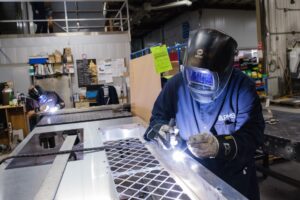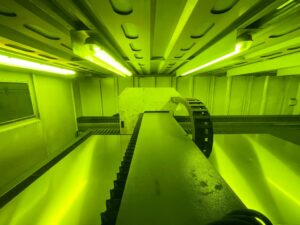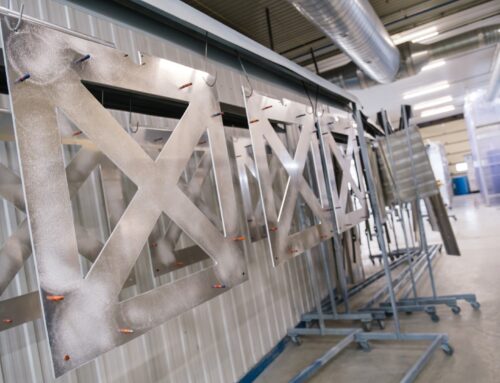Do you know the main metalworking methods?
Punching
Metalworking methods include punching, which involves perforating metal with a punch. Depending on the type of cut, you can therefore obtain parts with different shapes, ranging from simple to more complex. This technique ensures precision cutting and rapid execution. This technique works on many types of material, but is most effective on certain types of metal such as aluminum and satin-finish steel.
Welding
 Welding is the ideal process for joining metal securely and permanently. This involves using a strong heat source to fuse two materials together. There are different types of welding, but one of the best known is TIG welding. Each method has its own advantages and disadvantages. When you need to carry out a series of fairly difficult actions, it’s best to opt for manual welding, whereas repetitive tasks are more easily performed with a welding robot.
Welding is the ideal process for joining metal securely and permanently. This involves using a strong heat source to fuse two materials together. There are different types of welding, but one of the best known is TIG welding. Each method has its own advantages and disadvantages. When you need to carry out a series of fairly difficult actions, it’s best to opt for manual welding, whereas repetitive tasks are more easily performed with a welding robot.
Crimping
Unlike welding, where a heat source is used, crimping assembly is carried out after deformation. In addition to being safe and fast, this technique avoids thermal distortion. The only drawback is that crimped edges are less resistant than a welded joint.
Laser cutting
 Laser cutting enables a beam to be focused on a small area, raising its temperature until it vaporizes. The use of lasers makes it possible to obtain parts with a variety of shapes and cleaner, more aesthetic edges. With the latest laser technology, it’s even possible to avoid deburring after cutting.
Laser cutting enables a beam to be focused on a small area, raising its temperature until it vaporizes. The use of lasers makes it possible to obtain parts with a variety of shapes and cleaner, more aesthetic edges. With the latest laser technology, it’s even possible to avoid deburring after cutting.
Folding
 Bending is a method of permanently deforming metal. This operation requires the use of a press brake. There are also different types of bending, the best known of which is V-bending. This metalworking technique allows you to get the job done quickly and well. Being a press brake operator is a lot more complex than it sounds. In fact, this job requires a great deal of calculation and three-dimensional visualization. This makes it possible to define the right bending steps for each project and the part’s path on the production line.
Bending is a method of permanently deforming metal. This operation requires the use of a press brake. There are also different types of bending, the best known of which is V-bending. This metalworking technique allows you to get the job done quickly and well. Being a press brake operator is a lot more complex than it sounds. In fact, this job requires a great deal of calculation and three-dimensional visualization. This makes it possible to define the right bending steps for each project and the part’s path on the production line.


